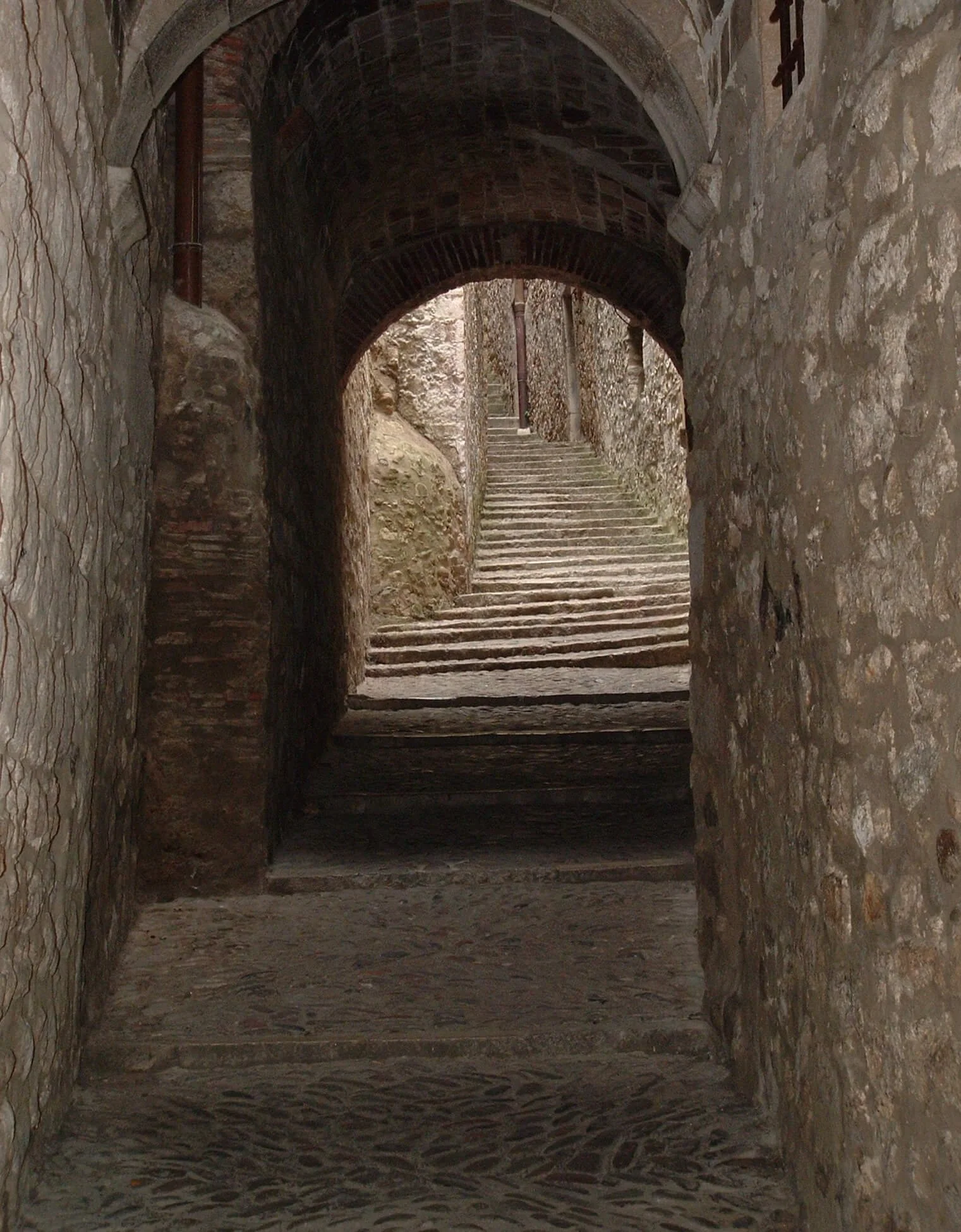Inspiration in Location
If you stand at the foot of the cathedral steps in Girona, some hundred kilometres northeast of Barcelona, what you’re really standing on is the Via Augusta, one of the roads that led to Rome. You can feel the centuries of history tugging at your sleeve. Towering above you is the Gothic cathedral, its stones carrying fossilised sea creatures, an evolutionary contradiction for a cathedral wall. To your right is a carriage-width chasm of a street, where the windows along one side are up to five hundred years younger than the buildings they’re in. It marked the edge of the medieval Jewish ghetto, its residents banned from looking out over the city, the windows put in after the Jews were expelled in 1492. Turn again and you see a café that had been home to seditious talk of democracy and freedom under the Franco regime, next to the seventeenth-century building that housed the law courts until just a few years ago. One final turn leads you to a medieval gateway, the large uneven stones at the base the remnants of the Roman wall. And at the top of the arch is the moment that sparked the first book in the Elisenda Domènech series of police procedurals.
I was supposed to be researching for a guide book about Girona, but the discovery in the municipal archives that had sent me out looking for a small statue captivated me from the first moment. Looking out over centuries of lives was the Virgin of Good Death, a figurine set into a niche high above the cobbled street. Her purpose lived up to her name. In medieval times, she was the last sight of the city given to convicted criminals as they were led outside the city walls, a final blessing before they went to their execution.
The same week, I came across a series of legends I’d never heard before, even though I’d lived in Catalonia for over twenty years. One in particular told of a stone face carved high on a street corner that I’d passed hundreds of times and never seen. It was a demonic face with round eyes and pointed ears: En Banyeta, a usurer turned to stone. Anyone who rubs noses with the carving will instantly have their debts pardoned: the catch is he’s three metres above the ground. I told a friend from Girona about it and he’d never heard of it either, and it was those two moments that planted the seed of a story about how easy it is to forget the stories of our own culture, and of how someone might take their frustration with that to an extreme.
All of this happened at a time when policing was being devolved to the Mossos d’Esquadra, the Catalan police. Essentially, it was a new service that wanted a complete break from a system that was seen as a hangover from the Franco era, and it did this through a structure more closely resembling northern European police services and a policy of recruiting more women and more graduates. It was this desire to break with the past that seemed the perfect counterpoint to the idea of the conflict between change and tradition. And this policy that inspired the character of the irreverent and sharp-witted Elisenda Domènech as the head of an experimental Serious Crime Unit in Girona.
Following on from City of Good Death, where a killer is targeting hate figures, announcing their crimes by leaving cryptic symbols on the statue of the Virgin, is City of Buried Ghosts. Here, Elisenda is given a cold case, a thirty-year old murder of a man found on an archaeological dig, his death mirroring an ancient Iberian form of ritual execution, that leads her team into the trade in illicit antiquities. In the final book in the trilogy, City of Drowned Souls, the teenaged son of a populist politician goes missing at election time, as rising flood waters threaten the region.
Standing under the gateway on that hot summer morning, I wondered at everything that the Virgin of Good Death must have witnessed and I thought of all the stories she had to tell. As does Girona. But then, any location does if something in it sings to you.
